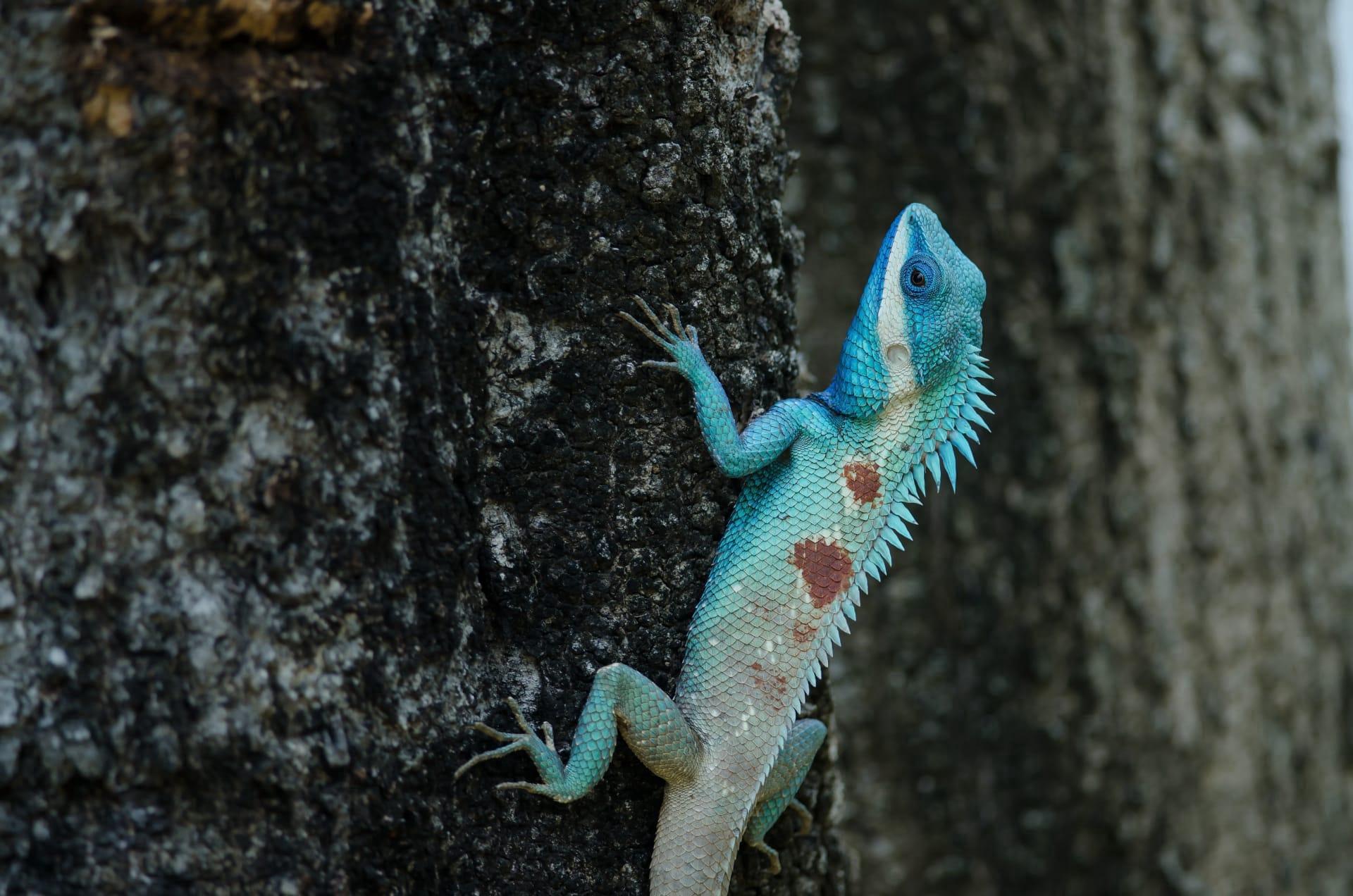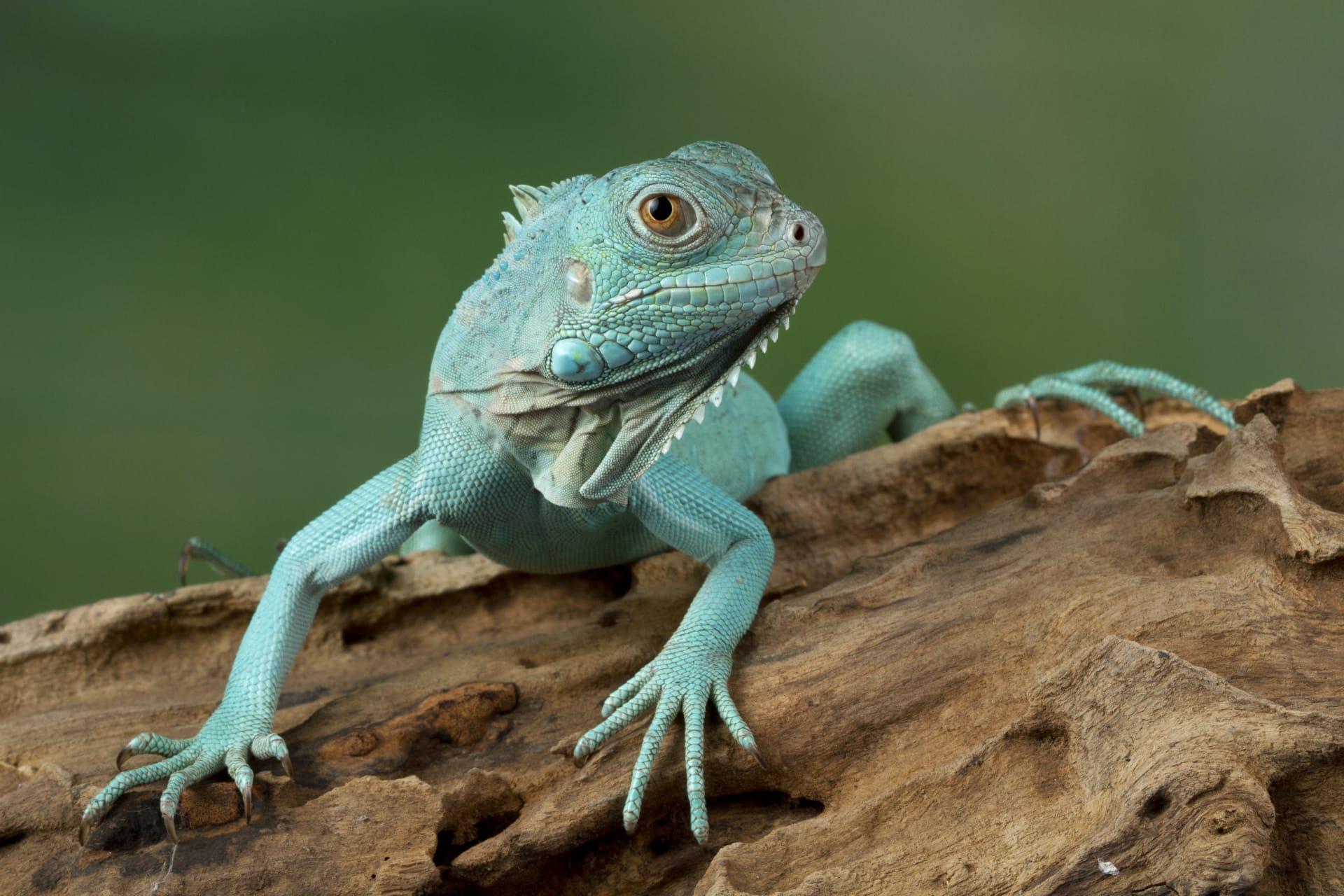Blue Iguana
- Home /
- Mini Encyclopedia /
- Animal /
- Blue Iguana
1
The Blue Iguana, scientifically named Cyclura lewisi, belongs to the family Iguanidae, a group known for its diverse species of lizards. This iguana is a distinct species, primarily due to its unique genetic makeup and physical characteristics, like its striking blue color. Classified under the genus Cyclura, the Blue Iguana is closely related to other rock iguanas found in the Caribbean. Its taxonomic classification reflects a fascinating evolutionary history, shaped by the specific ecological conditions of its habitat.
Native exclusively to the Grand Cayman Island in the Caribbean, the Blue Iguana's distribution is quite limited. This species historically roamed throughout the island, but its range has significantly reduced over the years. The Blue Iguana's habitat is typically dry, rocky areas and light forests, which offer ample sun exposure crucial for their thermoregulation. Sadly, due to human expansion and habitat destruction, their population has dwindled, confining them to smaller areas, primarily within protected reserves like the Queen Elizabeth II Botanic Park.

2
Question: Are Blue Iguanas poisonous or dangerous to humans?
Answer: Contrary to a common misconception, Blue Iguanas are not poisonous and generally pose no danger to humans. They are predominantly herbivorous, feeding on a variety of plants, fruits, and flowers. Their teeth and jaws are adapted for a plant-based diet, not for inflicting harm on large animals or humans. While they can display aggression when threatened, Blue Iguanas usually resort to fleeing rather than confrontation. It's essential to treat them with respect and caution in their natural habitat to avoid stressing the animals.

3
The survival strategy of the Blue Iguana is fascinating and multifaceted. One key aspect is their remarkable adaptation to the harsh, dry environment of Grand Cayman. They are excellent at conserving water, extracting most of their needs from the food they consume. Their kidneys are highly efficient in minimizing water loss. Additionally, Blue Iguanas are ectothermic, relying on external heat sources to regulate their body temperature. They bask in the sun to warm up and seek shade to cool down, a behavior critical for their survival.
Reproduction is another crucial survival strategy for Blue Iguanas. They have a distinct breeding season, usually between May and June. Females lay eggs in burrows, which they painstakingly prepare in sandy or soft soil. These burrows are strategically located to ensure the right temperature and humidity for the eggs. The hatchlings are independent from birth, equipped with instincts for survival like seeking food and avoiding predators.

4
In the ecosystem of Grand Cayman, the Blue Iguana plays a crucial role. As a herbivore, it aids in seed dispersal, contributing to the growth and maintenance of the island's flora. Their feeding habits help in maintaining the balance of plant species, preventing any single species from becoming overly dominant. This, in turn, supports a diverse ecosystem, providing habitats for a variety of other organisms.
Moreover, the Blue Iguana is an indicator species, meaning its health reflects the overall health of its environment. A thriving Blue Iguana population suggests a healthy, balanced ecosystem. Unfortunately, their current endangered status highlights the environmental challenges facing Grand Cayman, including habitat destruction and invasive species. Conservation efforts for the Blue Iguana, therefore, have broader implications for the island's ecological well-being.

5
Film: "The Last Stand of the Blue Iguana" (United States, 2008) offers a deep dive into the plight and conservation efforts for the Blue Iguana. This documentary highlights the challenges faced by conservationists in the Grand Cayman, showcasing their efforts to save this unique species from extinction. It's a compelling narrative that combines science, emotion, and a stark reminder of our impact on nature.
Book: "Iguanas: Biology and Conservation" (United States, 2004) by Allison Alberts et al. includes comprehensive information on various iguana species, including the Blue Iguana. The book, authored by renowned herpetologists, provides insights into the biology, behavior, and conservation strategies for iguanas, making it a valuable resource for both scientists and enthusiasts.
Book: "Rock Iguanas of the Caribbean" (United States, 2016) by Glenn Gerber delves into the world of Caribbean rock iguanas, with a significant focus on the Blue Iguana. It discusses the natural history, conservation challenges, and the efforts being made to ensure their survival. This book is an essential read for anyone interested in Caribbean wildlife and conservation efforts.